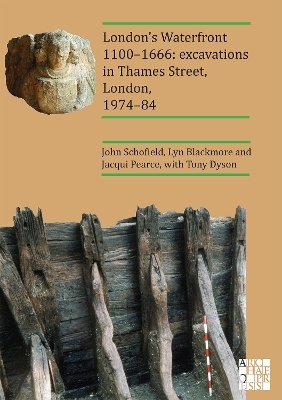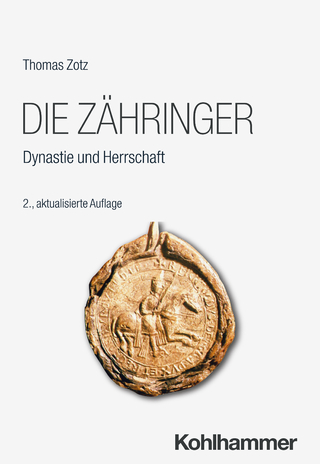
London’s Waterfront 1100–1666: Excavations in Thames Street, London, 1974–84
Archaeopress (Verlag)
978-1-78969-559-5 (ISBN)
London’s Waterfront 1100–1666: excavations in Thames Street, London, 1974–84 presents and celebrates the mile-long Thames Street in the City of London and the land south of it to the River Thames as an archaeological asset. The argument is based on the reporting of four excavations of 1974–84 by the Museum of London near the north end of London Bridge: Swan Lane, Seal House, New Fresh Wharf and Billingsgate Lorry Park. Here the findings of the period 1100–1666 are presented. Buildings and property development on sixteen properties south of Thames Street, on land reclaimed in many stages since the opening of the 12th century, include part of the parish church of St Botolph Billingsgate. The many units of land reclamation are dated by dendrochronology, coins and documents. They have produced thousands of artefacts and several hundred kilos of native and foreign pottery. Much of this artefactual material has been published, but in catalogue form (shoes, knives, horse fittings, dress accessories, textiles, household equipment). Now the context of these finds, their deposition in groups, is laid out for the first time. Highlights of the publication include the first academic analysis and assessment of a 13th- or 14th-century trumpet from Billingsgate, the earliest surviving straight trumpet in Europe; many pilgrim souvenirs; analysis of two drains of the 17th century from which suggestions can be made about use of rooms and spaces within documented buildings; and the proposal that one of the skeletons excavated from St Botolph’s church is John Reynewell, mayor of London in 1426–7 and a notable figure in London’s medieval history. The whole publication encourages students and other researchers of all kinds to conduct further research on any aspect of the sites and their very rich artefactual material, which is held at the Museum of London’s Archaeological Archive. This is a significantly large and varied dataset for the archaeology and history of London in the period 1100 to 1666 which can be continuously interrogated for generations to come.
John Schofield was an archaeologist at the Museum of London from 1974 to 2008. He has written several well-received books on the archaeology of London and of British medieval towns; and as Cathedral Archaeologist for St Paul’s Cathedral, archaeological accounts of the medieval and Wren buildings. ; Lyn Blackmore is a Senior Ceramics and Finds Specialist who has worked for MOLA and its predecessors since 1986. In 2009–14 she was Assistant Treasurer of the Medieval Pottery Research Group and in 2017 was elected co-editor of its journal Medieval Ceramics, a role she first held in 1989–94. ; Jacqui Pearce is a Senior Ceramics Specialist with MOLA, focusing especially on medieval and later pottery, on which she has published widely. In 2017 she was elected President of the Society for Post-Medieval Archaeology. ; Tony Dyson was the principal documentary historian and general editor at the Department of Urban Archaeology of the Museum of London from 1974 to 1998.
Summary ;
1. The report: introduction ;
2. Period M1 (1100–1200, 1220 on site A) ;
3. Period M2 1200–1350 ;
4. Period M3 1350–1500 ;
5. Period P1 (1500 to 1666) ;
6. Essays and specialist reports: the development and character of the waterfront of the City of London, 1100–1666, and suggestions for future research ;
7. Dating Tables and Artefact Tables ;
8. Section drawings and supporting files online ;
9. Summaries in French and German (translated by Madeleine Hummler) ;
10. Bibliography and abbreviations ;
Index
| Erscheinungsdatum | 06.07.2020 |
|---|---|
| Co-Autor | Tony Dyson |
| Zusatzinfo | 292 figures; 162 tables; 38 artefact tables (colour throughout) |
| Verlagsort | Oxford |
| Sprache | englisch |
| Maße | 205 x 290 mm |
| Gewicht | 1858 g |
| Themenwelt | Geisteswissenschaften ► Archäologie |
| Geschichte ► Allgemeine Geschichte ► Mittelalter | |
| ISBN-10 | 1-78969-559-7 / 1789695597 |
| ISBN-13 | 978-1-78969-559-5 / 9781789695595 |
| Zustand | Neuware |
| Informationen gemäß Produktsicherheitsverordnung (GPSR) | |
| Haben Sie eine Frage zum Produkt? |
aus dem Bereich


